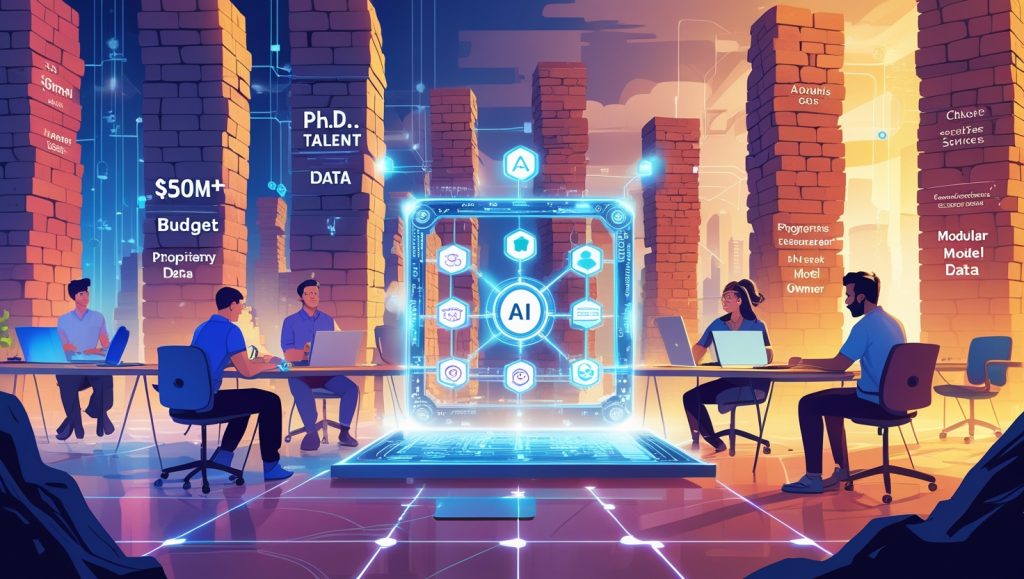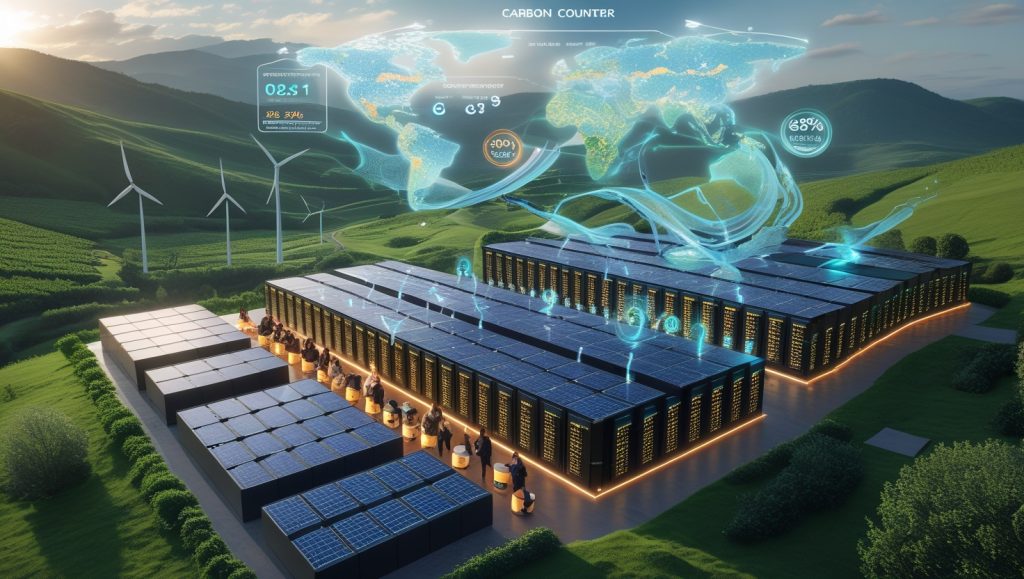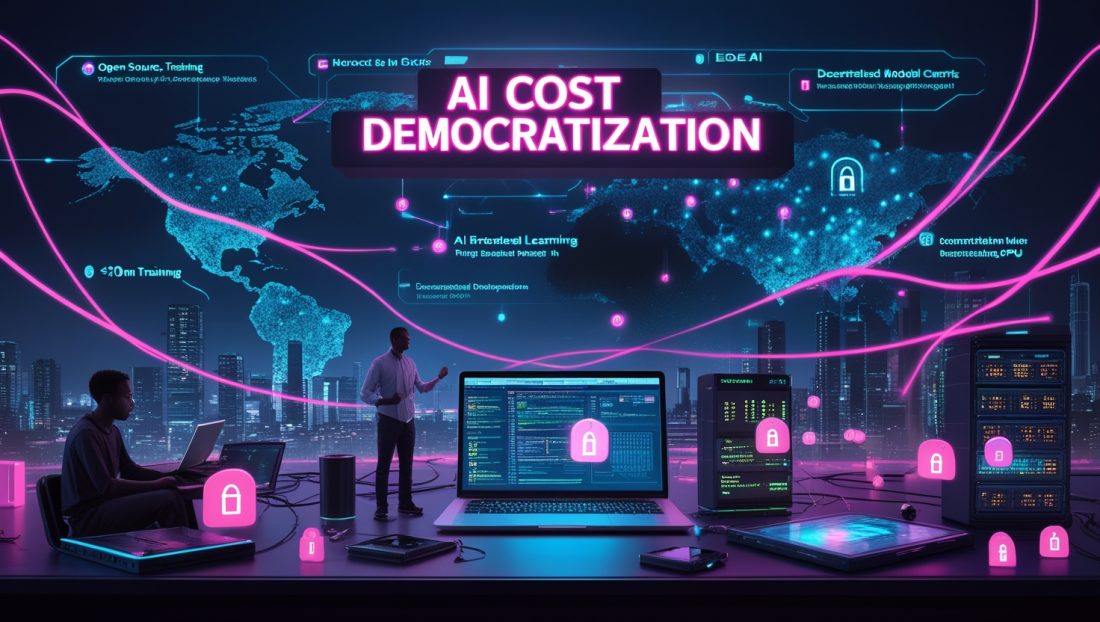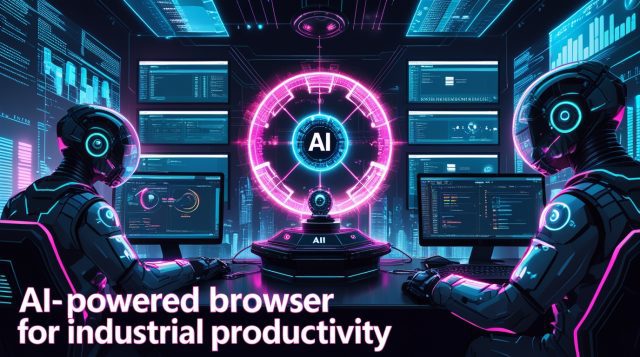The Democratization Wave—Who Stands to Gain?
What if the next groundbreaking AI innovation doesn’t emerge from Silicon Valley, but from a startup in Nairobi or a student in Bangalore? In 2023, OpenAI’s GPT-4 required $100 million to train. By 2025, companies like China’s DeepSeek and Kenya’s Apollo Agriculture are building comparable tools for less than $10 million. This seismic shift—AI cost democratization—isn’t just about affordability; it’s about rewriting the rules of who gets to innovate.
From smallholder farmers leveraging AI-driven crop analytics to indie game developers using no-code platforms to create immersive worlds, the playing field is leveling. But how did we get here, and what does this mean for the future of global competition? Let’s unpack seven breakthroughs driving this revolution, supported by real-world case studies, ethical debates, and actionable strategies for businesses of all sizes. For a deeper look at how open-source AI is fueling this shift, check out why DeepSeek’s source code release is a game-changer for open-source AI.
What Is AI Cost Democratization? (And Why Should You Care?)

AI cost democratization refers to the systematic reduction of financial, technical, and infrastructural barriers preventing widespread AI adoption. Historically, developing advanced AI required:
- Massive budgets ($50M+ for training models like GPT-3).
- Specialized talent (Ph.D.-level machine learning engineers).
- Proprietary data (e.g., Google’s search datasets).
Today, tools like open-source frameworks, federated learning systems, and modular cloud infrastructure are dismantling these obstacles. A 2024 IBM study found that 68% of startups now use AI tools that were inaccessible to them just three years ago. But democratization isn’t just about access—it’s about equity. To understand why this shift is critical, explore why small businesses can’t ignore AI to survive.
Breakthrough 1: Open-Source Communities Fueling Collaborative Innovation
“Open-source AI is the great equalizer. It’s not perfect, but it’s the first time small players can compete without begging for scraps.”
—Linus Torvalds, Creator of Linux
The Rise of Open-Source Ecosystems for AI Cost Democratization
Open-source platforms like Hugging Face and EleutherAI have become the backbone of AI cost democratization. For instance, Meta’s LLaMA 3, released under a non-commercial license in 2023, enabled thousands of developers to fine-tune models for niche applications—from diagnosing rare diseases to optimizing supply chains. These platforms empower global innovators by reducing reliance on proprietary systems. Learn more about how open-source models are reshaping industries in why Microsoft’s Magma AI is redefining the future of robotics.
Case Study: Stanford’s $2M Breakthrough
In 2024, Stanford researchers used LLaMA’s architecture to create a model rivaling GPT-4’s performance. By crowdsourcing synthetic data via IBM’s InstructLab, they slashed training costs by 82%. The result? A language model tailored for low-resource languages like Swahili, now used by educators in Tanzania to create localized STEM curricula.
Challenges and Controversies in Open-Source AI
Critics argue that open-source models still depend on tech giants’ infrastructure. For example, 74% of Hugging Face’s models run on AWS or Google Cloud, perpetuating centralization. However, initiatives like Together AI’s decentralized GPU network aim to redistribute compute power by 2026. For a closer look at the risks of centralized AI, see why the dark side of AI threatens our future.
Breakthrough 2: Federated Learning—Privacy Meets Scalability

“Federated learning turns every smartphone into a collaborative researcher.”
—Dr. Blaise Agüera y Arcas, Head of Google Research
How Federated Learning Drives AI Cost Democratization
Federated learning (FL) trains AI models across decentralized devices without sharing raw data. Apple’s Siri uses FL to improve voice recognition, while Owkin’s MedNet collaborates with 30+ hospitals to develop cancer detection tools without transferring patient records. By enabling collaborative innovation without centralized data, FL is a cornerstone of AI cost democratization. Discover how FL is transforming industries in AI-driven scientific discovery transforming critical challenges.
Real-World Impact: Project InnerEye
Microsoft’s Project InnerEye uses FL to train radiotherapy planning models across 15 global clinics. Participating institutions retain data control, yet the model’s accuracy improved by 40% in 2024. FL is projected to save healthcare systems $12 billion annually by 2027.
Ethical Considerations for Federated Learning
While FL enhances privacy, it doesn’t eliminate bias. A 2025 MIT study found FL models trained on skewed device data (e.g., predominantly male-owned smartphones) perpetuated gender disparities in credit scoring. Solutions like IBM’s AI Fairness 360 are being integrated into FL frameworks to audit outcomes. For more on AI ethics, read why AI ethics could save or sink us.
Breakthrough 3: No-Code Platforms Unleash Citizen Developers
The Democratization of Creation Through No-Code AI
Platforms like Google’s Vertex AI and Appy Pie’s AI Builder enable users to deploy chatbots, predictive analytics, and image generators without coding. Salesforce reports that its no-code Einstein AI boosted SME productivity by 35% in 2024. These tools are pivotal for AI cost democratization, empowering non-technical users to innovate. See how no-code platforms are revolutionizing industries in WordPress.com’s free AI-powered website builder.
Case Study: Jakarta’s Urban Farming Revolution
GreenGrowth, a Jakarta-based startup, used Zapier’s AI workflows to connect soil sensors with irrigation systems. Without hiring data scientists, they reduced water waste by 60% across 500 urban farms.
Limitations and Future Trends in No-Code AI
No-code tools struggle with complex tasks like fine-tuning LLMs. However, NVIDIA’s forthcoming Picasso platform aims to let users train custom image models via natural language prompts by late 2025. For insights into AI’s creative potential, check out Alibaba’s free AI video generator.
Breakthrough 4: Edge Computing Slashes Cloud Dependency
Why Edge AI Is a Game-Changer for AI Cost Democratization
Edge AI processes data on local devices (e.g., drones, sensors), reducing latency and cloud costs. Farmers in Iowa using John Deere’s edge-enabled tractors analyze soil health in real time, cutting cloud expenses by 90%. By minimizing reliance on expensive cloud infrastructure, edge AI is a key driver of AI cost democratization. Learn how edge AI is transforming industries in edge AI powering real-time intelligence.
Data Spotlight
- Cost Reduction: AI inference costs dropped from $20 to $0.07 per million tokens between 2023–2025 (McKinsey).
- Speed: Edge devices process data 10x faster than cloud-dependent systems (Deloitte).
Breakthrough 5: Regulatory Tailwinds and Ethical Funding
The EU AI Act: A Blueprint for Fair AI Access
Effective 2025, the EU AI Act mandates transparency for high-risk systems. For example, RecruitmentAI must now disclose if algorithms prioritize candidates based on gender or ethnicity. Non-compliance risks fines up to 6% of global revenue. These regulations support AI cost democratization by ensuring fair access to AI tools. For more on global AI regulations, see global AI regulation divide in 2025.
NAIRR: Fueling Inclusive Innovation
The U.S. National AI Research Resource pilot, launched in 2024, grants SMEs access to supercomputers and datasets. Early beneficiary ClimateVision used NAIRR resources to build a wildfire prediction model now adopted by California’s forestry department.
Breakthrough 6: Decentralized AI Marketplaces
Platforms like Ocean Protocol and SingularityNET let users monetize AI models and data. A Kenyan farmer recently earned $5,000 by selling soil health data to agritech firms via Ocean—an income stream previously inaccessible. These marketplaces are vital for AI cost democratization, enabling global participation. Explore decentralized AI’s potential in AI infrastructure and OpenAI’s $12B bet.
Breakthrough 7: Sustainable AI Practices

The Green AI Movement for Sustainable Democratization
Training Llama 3.1 emitted 8,930 tonnes of CO2—equivalent to 500 Americans’ annual footprint. Initiatives like Google’s Carbon-Aware Compute shift model training to regions with surplus renewable energy, reducing emissions by 32%. Sustainable practices ensure AI cost democratization is environmentally viable. For more on AI’s environmental impact, read why robotics is the secret weapon against climate change.
The Road Ahead: Challenges in Democratization
- Centralization Risks: Meta and Google control 80% of open-source contributions.
- Skill Gaps: 72% of workers lack AI literacy (U.S. Census Bureau).
- Ethical Dilemmas: Can decentralized systems prevent malicious use?
For a deeper dive into AI’s challenges, check out why AI as the last invention could end humanity.
FAQs: Addressing Common Concerns
How does AI cost democratization benefit small businesses?
Tools like ChatGPT and Canva’s Magic Design allow SMEs to automate marketing, customer service, and design at 10% of traditional costs.
What are the risks of democratized AI?
Lower barriers enable malicious actors to create deepfakes or spam. However, the EU’s upcoming Digital Services Act requires platforms to audit AI-generated content.
Will democratization eliminate AI jobs?
No—it shifts demand toward roles like AI ethicists and prompt engineers. For more on AI’s job impact, see why robots solve the labor crisis.
Your Role in the Democratized Future
AI cost democratization isn’t a tech trend—it’s a societal shift. Whether you’re a teacher using AI to personalize lessons or an NGO predicting drought patterns, the tools are now within reach. To stay ahead, explore how AI is reshaping industries in AI-driven model optimization strategies.
Your Next Step
Ready to harness AI for your business? [Subscribe to our newsletter] for monthly insights, or explore [IBM’s AI Ethics Toolkit] to start responsibly.

